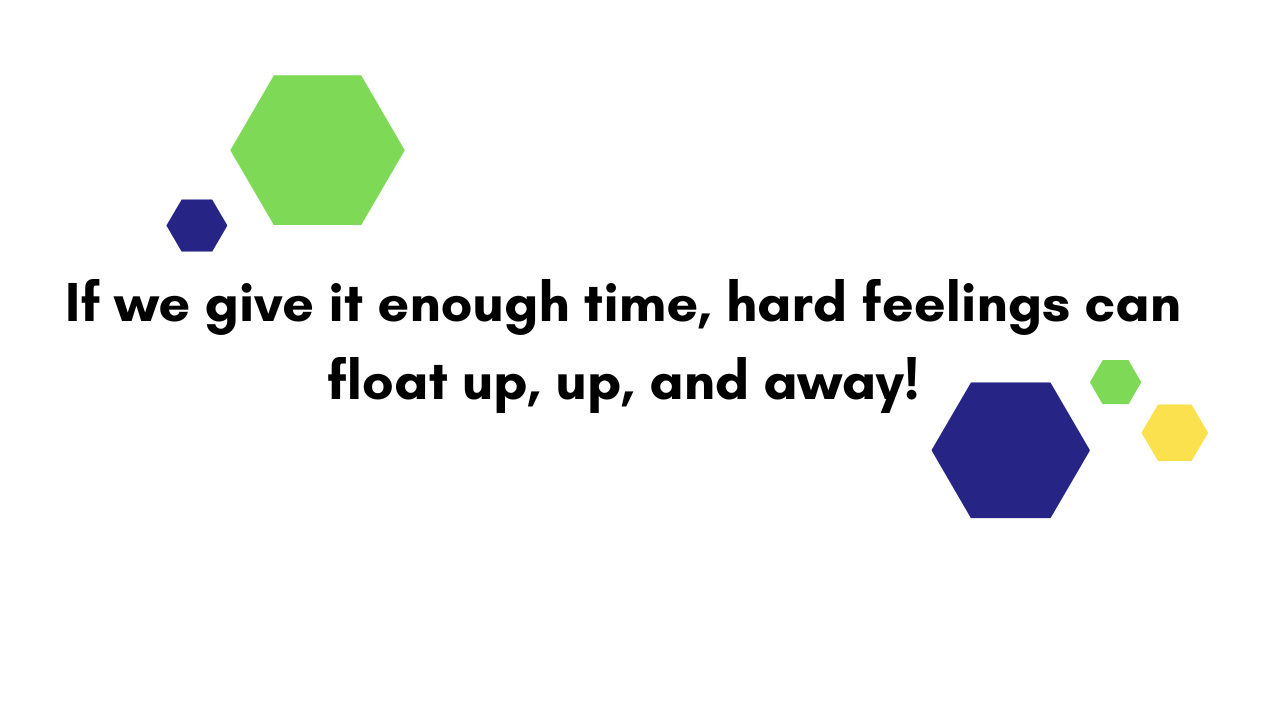Make Feelings Float With Balloons

Emotion regulation is a common struggle for children going through cancer. This means that kids seem to go from 0 to 100, flying off the handle without much, if any, warning. Children with cancer are exposed to stressors that far exceed their coping abilities at very early ages, and this is what often causes them to have trouble managing big feelings. There are many skills that lay the foundation for staying calm when upset. One of these skills is being able to tell the difference between an intense, or "big" feeling and a gentler, "small" feeling.
If you think your child (or you!) would benefit from practicing this skill, a fun way to do it is by using balloons.
Think of an emotion that is hard to handle. It might be fear, jealousy, or anger. Something that tends to inspire yelling, storming out of the room, or other concerning behaviors. Once you pick the feeling, write it on an inflated balloon.
Take the balloon and put it by your feet, or your child's feet. Notice how the balloon is pretty easy to ignore. Ask your child to help you brainstorm examples of when you each feel "a little bit" of the emotion on the balloon. Perhaps they feel "a little bit" angry when you tell them to put the dishes away. Once you settle on a good example, explain that feeling "a little bit" angry is like having the anger down by their feet - just like the balloon is.
Next, take the balloon and put it in your lap or your child's lap. Notice how the balloon is clearly visible when you look down, but still not bothersome. Continue brainstorming ideas, this time for what a "medium" emotion feels like. Maybe your child feels "medium" jealous when an older sibling gets to stay up later at bedtime. Again, once you find a good example, talk about how a "medium" emotion is like having the emotion in their lap. It's more noticeable than when it was by their feet, but it can still be ignored.
Finally, take turns holding the balloon in front of your face and having your child do the same. Notice how, when the balloon is in front of your face, it completely prevents you from seeing anything else. It also prevents your child from seeing you, and vice versa. Engage your child in conversation about how some feelings are so big that they take over all of their attention. See if you can find an example of a time your child felt this way - if they aren't comfortable sharing (which can feel embarrassing) offer an example of when you had such a strong feeling.
Once your child has a grasp on what the balloon represents and what it means to have it in different places, you can practice "letting go" of the feeling by letting go of the balloon. With the balloon held up by your face, model dropping it so it falls to your lap or the floor. Imagine the emotion floating away just like the balloon does. Your child can practice doing the same thing.
Bonus: Try having your child "throw away" the feeling by throwing the balloon as hard as they can. Balloons usually don't travel very far, even when thrown. It will likely seem like a waste of energy to throw the balloon when you could just drop it for a similar effect. Emotions work very similarly - pushing feelings away is not very effective, so allowing them to fade away by "letting go" can be much more helpful.
You can reinforce your child's ability to distinguish between "feelings by their feet" and "feelings in their face" by modeling your own labeling of emotions in different situations. You can also ask your child to rate their emotions when they ask for help with solving a problem.
Note: It is not recommended to coach children about their emotions in the heat of a tough moment - telling someone that they need to calm down is a surefire way to float an "anger balloon" right up to their face.
All content on Cancer Cushion is provided for informational purposes only. Individuals experiencing a mental health emergency should contact their local crisis line or dial 988.
Read other blog posts here!
Copyright Cancer Cushion PLLC. The materials on this site do not constitute or replace therapy or mental health services and are provided for educational purposes only.
Privacy Policy | Terms and Conditions